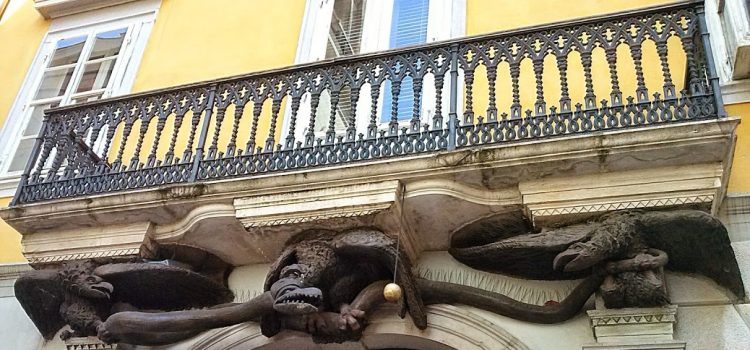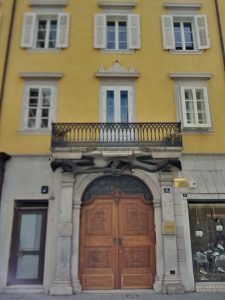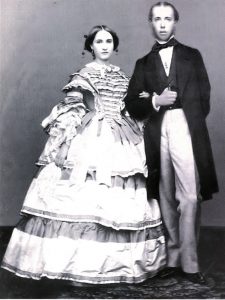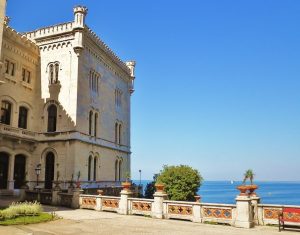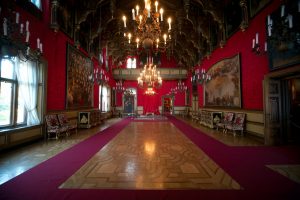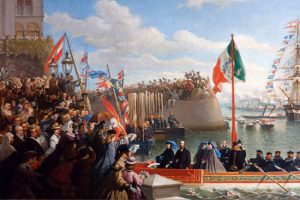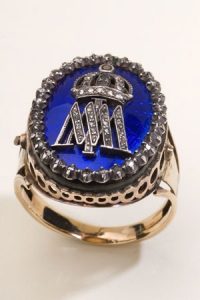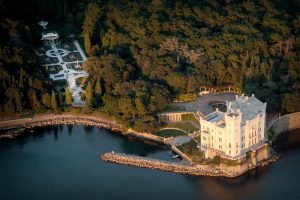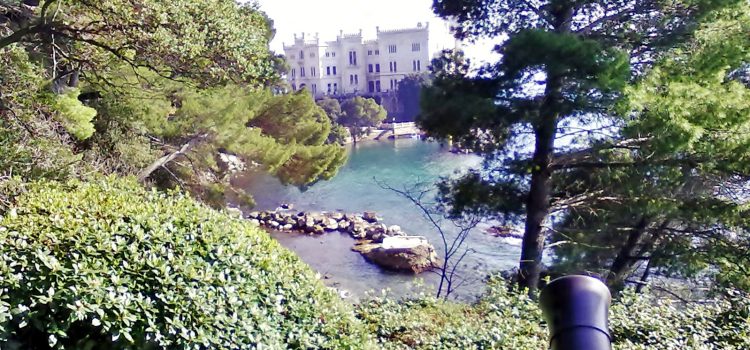LA CASA DELLE BISSE -TRIESTE
CASTLE OF MIRAMARE – TRIESTE
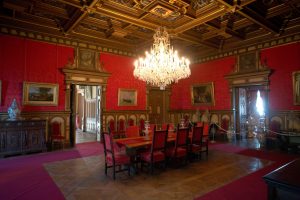 Inside, the Castle was divided into numerous rooms. The ground floor was intended for the couple’s residence, while the upper floor was for guests and representatives. Franz and Julius Hofmann carried out the interior decoration.The ground floor works ended in 1860, when Massimiliano and Carlotta moved to the Castle, after their decay from the office of governor of Lombardy-Veneto, while the representative rooms were completed around 1870. In 1930, part of the representative floor was used as the residence of Duke Amedeo d’Aosta, who lived there for about seven years and modified some rooms according to the style of the time as well as replaced Imperial-Regie insignia with Savoy crosses.
Inside, the Castle was divided into numerous rooms. The ground floor was intended for the couple’s residence, while the upper floor was for guests and representatives. Franz and Julius Hofmann carried out the interior decoration.The ground floor works ended in 1860, when Massimiliano and Carlotta moved to the Castle, after their decay from the office of governor of Lombardy-Veneto, while the representative rooms were completed around 1870. In 1930, part of the representative floor was used as the residence of Duke Amedeo d’Aosta, who lived there for about seven years and modified some rooms according to the style of the time as well as replaced Imperial-Regie insignia with Savoy crosses.PARK OF THE CASTLE OF MIRAMARE -TRIESTE
After Massimiliano’s death in the Castelletto under medical supervision, Carlotta retired showing the first signs of mental imbalance.
In addition to the Miramare Castle, Carl Junker also designed the Park and the work was entrusted in 1857 to the court gardener Josef Laube, subsequently replaced by the Bohemian Anton Jelinek. The Archduke himself defined which plants should be planted and brought 820 species of plants from nurseries and villas of Veneto,
subsequently numerous tree typologies arrived from the imperial greenhouses of Vienna of the Habsburg family, while the more exotic ones were imported following the circumnavigation of the globe with the frigate Novara.
In the park there are sculptures from the Berlin school Moritz Geiss, the greenhouses, the Swan lake, the cannons donated by Leopoldo I, king of the Belgians and the chapel of San Canciano.
Like a silent sentinel, a Ptolemaic sphinx dating back to the 2nd century BC. C., carved in pink granite, is located at the top of the quay of the Castle’s harbor. It is a precious artefact belonging to the Egyptian collection brought together by Maximilian thanks to the scientific advice of Egyptologist Simon Reinisch, and now preserved in Vienna at the Kunsthistorisches Museum.



